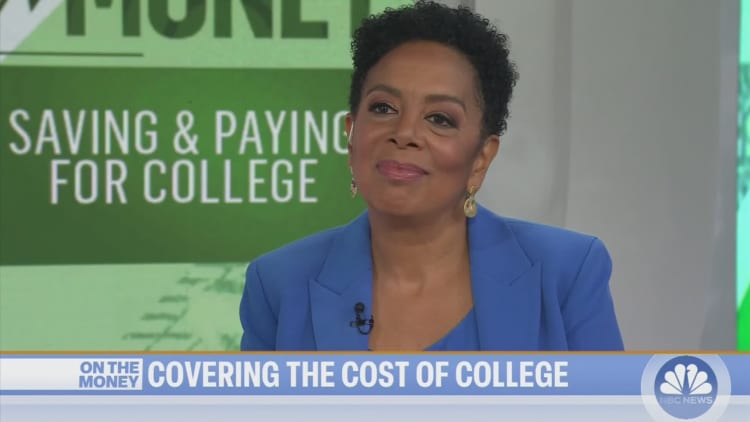
The U.S. Department of Education says it plans to update a key part of the new Free Application for Federal Student Aid formula, which will result in $1.8 billion more in aid for college-bound students this year.
The announcement comes weeks after the simplified FAFSA soft launched Dec. 30 after a monthslong delay.
Since then, the 2024-25 form has been plagued by problems.
How inflation data affects student aid
One of the issues has been specifically related to the new FAFSA's affordability calculation, called the "Student Aid Index," which estimates how much a family can afford to pay. At launch, the new FAFSA relied on old consumer price index figures from 2020, before the recent runup in inflation.
"In prior years, it wouldn't matter all that much because inflation was low," according to Kalman Chany, a financial aid consultant and author of The Princeton Review's "Paying for College."
In this case, "the numbers are significantly understated."
The Consolidated Appropriations Act stipulated that the Education Department is required to update the SAI tables every year based on the latest CPI data.
More from Personal Finance:
College enrollment picks up, but student debt is a sticking point
Gen Z says they have it harder than their parents did
Biden administration forgives $4.9 billion in student debt
In the buildup to the soft launch, the Education Department said it didn't plan to update those tables this year, but will update them for the 2025-26 aid cycle.
However, a department spokesperson has now confirmed that those inflation adjustments will be made this year.
"The U.S. Department of Education will be updating the supporting tables used in the Student Aid Index (SAI) calculation that account for inflation for the 2024-2025 award year," the spokesperson said. "By doing so, students will have access to an additional $1.8 billion in federal student aid."
More students could qualify for a Pell Grant
Making those numbers current will reduce the portion of a family's income that is considered available for educational expenses, resulting in a lower Student Aid Index and potentially increased financial aid eligibility, according to Justin Draeger, president of the National Association of Student Financial Aid Administrators.
As a result, more middle- and higher-income students could qualify for a Pell Grant, a type of aid available to low-income families, added higher education expert Mark Kantrowitz. Currently, the maximum Pell Grant award is $7,395.
"Students on the edge of Pell Grant eligibility could be most affected," Kantrowitz said.
There will be less of an effect on lower-income students whose expected family contribution was already $0.
Schools are waiting on FAFSA information
The Education Department previously said that once students successfully submit a completed FAFSA form, that information will be sent to schools in late January.
"With less than a week to go, the Department has announced a significant operational change that clearly throws that date into question," Draeger said.
It is still unclear whether this will affect that timeline or cause further delays. Schools are waiting on the FAFSA information to begin building financial aid packages and to give students and families enough time to review and compare financial aid offers.
The Education Department said it will share more details on its timeline for the update soon.
Subscribe to CNBC on YouTube.
Don't miss these stories from CNBC PRO:
- The S&P 500 is officially in a bull market now. Here's how long they typically last
- The early winner in the bitcoin ETF race has raked in $1 billion
- Goldman Sachs names its top stocks for 2024, including this solar company
- CD rates are coming down. Here's where you can lock in yields of nearly 5% for 2 years
- Buy the dip in these bitcoin mining stocks over the next two months, Bernstein says


